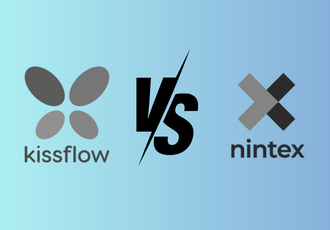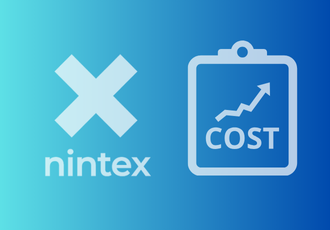Process Automation is more important than ever before, organizations need to digitize at scale, drive compliance, savings and sustainability.
As organizations set out their plans for process automation in 2021, I’m aware that there is some confusion in the market between “no code” and “low code” automation tools.
It’s with this in mind, that I’m sharing this blog to help you understand better the difference between no code and low code process automation tools.
Read on for a definition from Forrester, a summary of no code automation benefits and a real life example.
The Definitions Of No Code Vs. Low Code
In a webinar we held with the research experts at Forrester, Vice President and Principal Analyst, Rob Koplowitz attributed the below definitions of no code and low code solutions as the below:
- No Code
'Platforms that are designed to provide powerful software development to non-technical developers, often called business or citizen developers to build out processes with minimal support from IT or developers. Vendors of these systems attempt to make as much functionality as possible available without code. - Low Code
'Platforms that are designed to provide most software functionality to non-technical developers, but offer extensions to the environment to professional developers. Vendors of these systems attempt to make some functionality available without code while working to provide tools that allow business and professional developers to seamlessly work together.'
The above differences are some of the primary reasons organizations choose a no code process automation tool such as FlowForma® Process Automation over low code alternatives. To put it most simply, with low code tools the processes are owned and managed by IT, whereas with no code tools, the process is owned by the business user and IT acts as a gatekeeper.
Watch the short video to learn more about no code vs low code..
Key Benefits Of No Code Process Automation Over Low Code Process Automation
Now that you have a definition of each, I thought I would highlight some additional benefits of no code tools to further emphasize their flexibility. These benefits include:
- Speed
Processes are digitized at speed by businesspeople - Agility
Processes are adjusted in-house by process owners - Minimal Training
Designed for non-technical people and trusted by IT - Scalability
Processes are digitized at scale by the business - Faster ROI
Processes are digitized at scale without 3rd party services
In truth, no code platforms are now almost impossible for organizations to ignore based on what is achievable in a relatively short space of time from when they are deployed. During a time when adaptability and flexibility have become so vital, having the power and authority to edit and alter processes internally instead of waiting for IT to administer is a real game changer.
Real Life Examples
 FlowForma customers are benefiting from no-code process automation on a daily basis. Organizations such as the Liverpool School of Tropical Medicine are now embracing a new culture of engagement and collaboration as a result of digitizing their processes, with the no code FlowForma Process Automation tool. In particular LSTM's HR and Finance departments have been the main beneficiaries, digitizing over 120 processes. They have achieved this by:
FlowForma customers are benefiting from no-code process automation on a daily basis. Organizations such as the Liverpool School of Tropical Medicine are now embracing a new culture of engagement and collaboration as a result of digitizing their processes, with the no code FlowForma Process Automation tool. In particular LSTM's HR and Finance departments have been the main beneficiaries, digitizing over 120 processes. They have achieved this by:
- Replacing paper-based processes that were inefficient and made compliance a challenge
- Digitizing business processes with speed and flexibility across the institution to aid staff working in disparate locations
- Empowering business users to automate with ease using a no code process automation tool to eradicate inefficiencies in their HR and Finance departments, by digitizing their business processes with flexibility and speed
James Morgan, IT Manager on the A14 Joint Venture documented his experience of selecting a truly no code tool that was easy to use which removed the need for IT coding: "We looked at Nintex and K2, from our point, they were cost prohibitive. We didn’t feel that we would be going down the no code route and still would need a lot of influence and support from IT, so we didn’t want to pursue that.
We looked at PowerApps, which again didn’t really fit the bill. Some features seemed quite good, but once we dived into it a bit more, it became quite evident we were going to need to have skills around accessing APIs and doing a bit of Java.
FlowForma Process Automation met all our requirements."
See The Difference For Yourself
To learn more about digitizing your business processes with a no code process automation tool, request a personalized demo of the FlowForma Process Automation tool.
.jpg) By
By 
.jpg?width=480&name=No%20code%20vs%20low%20code%20video%20-%20homepage%20w%20play%20button%20(1).jpg)




